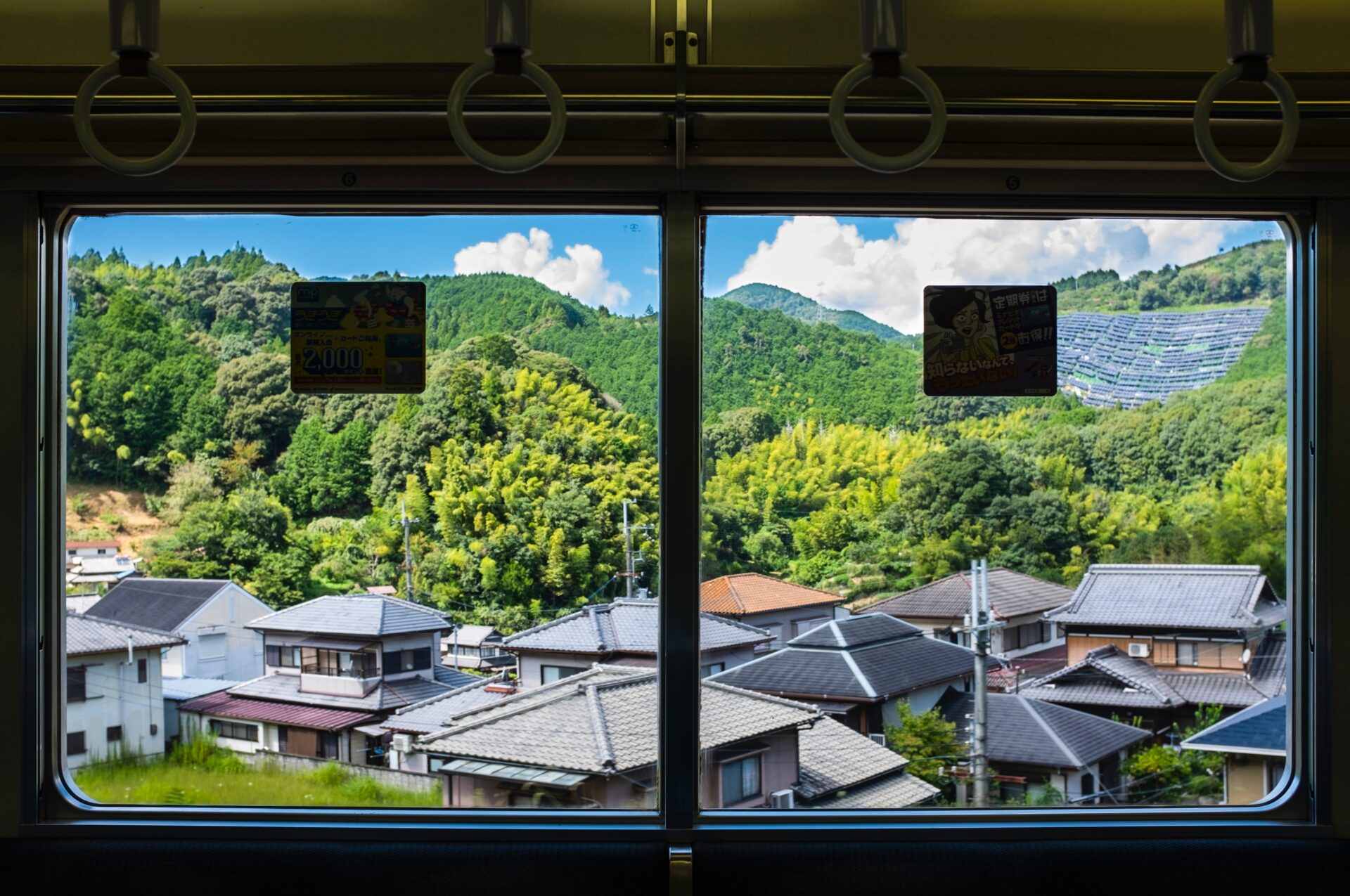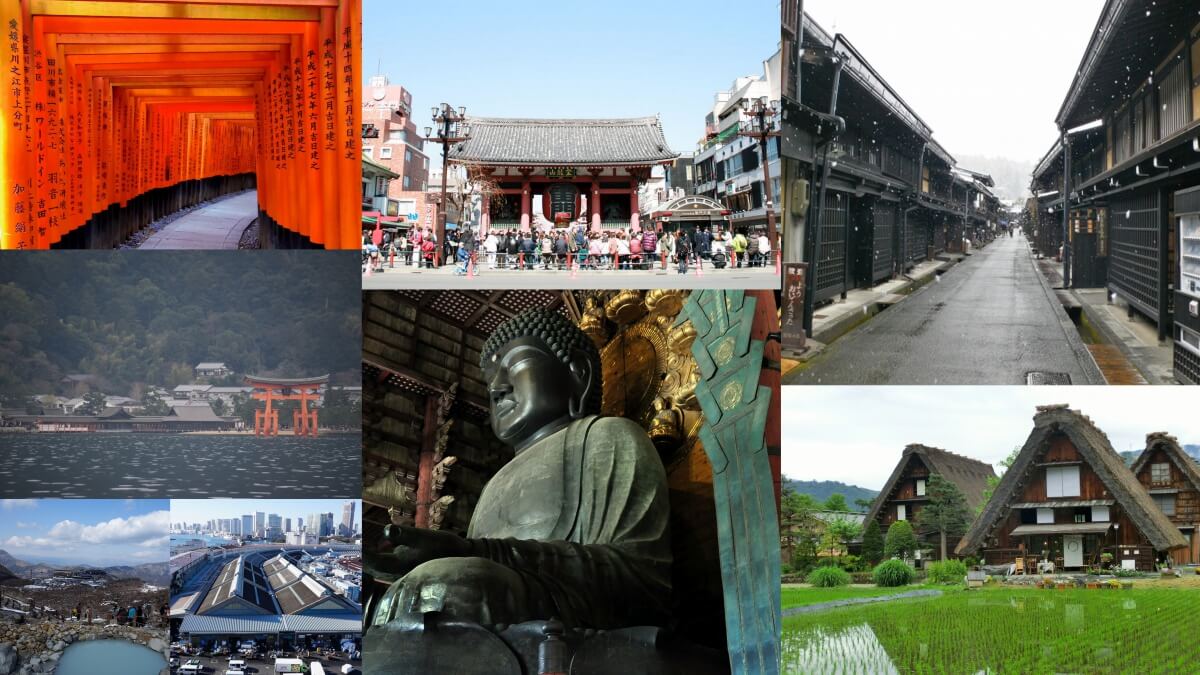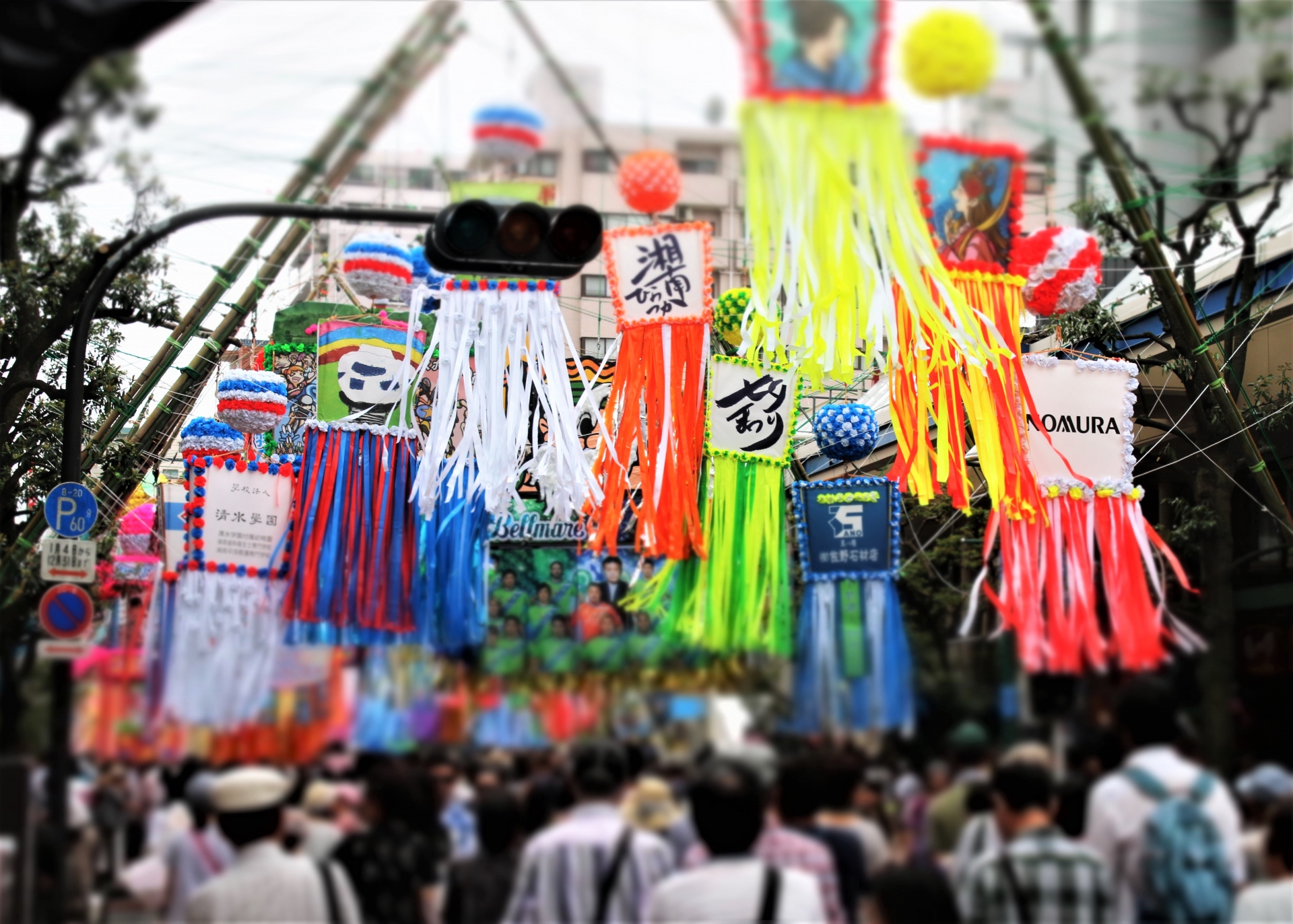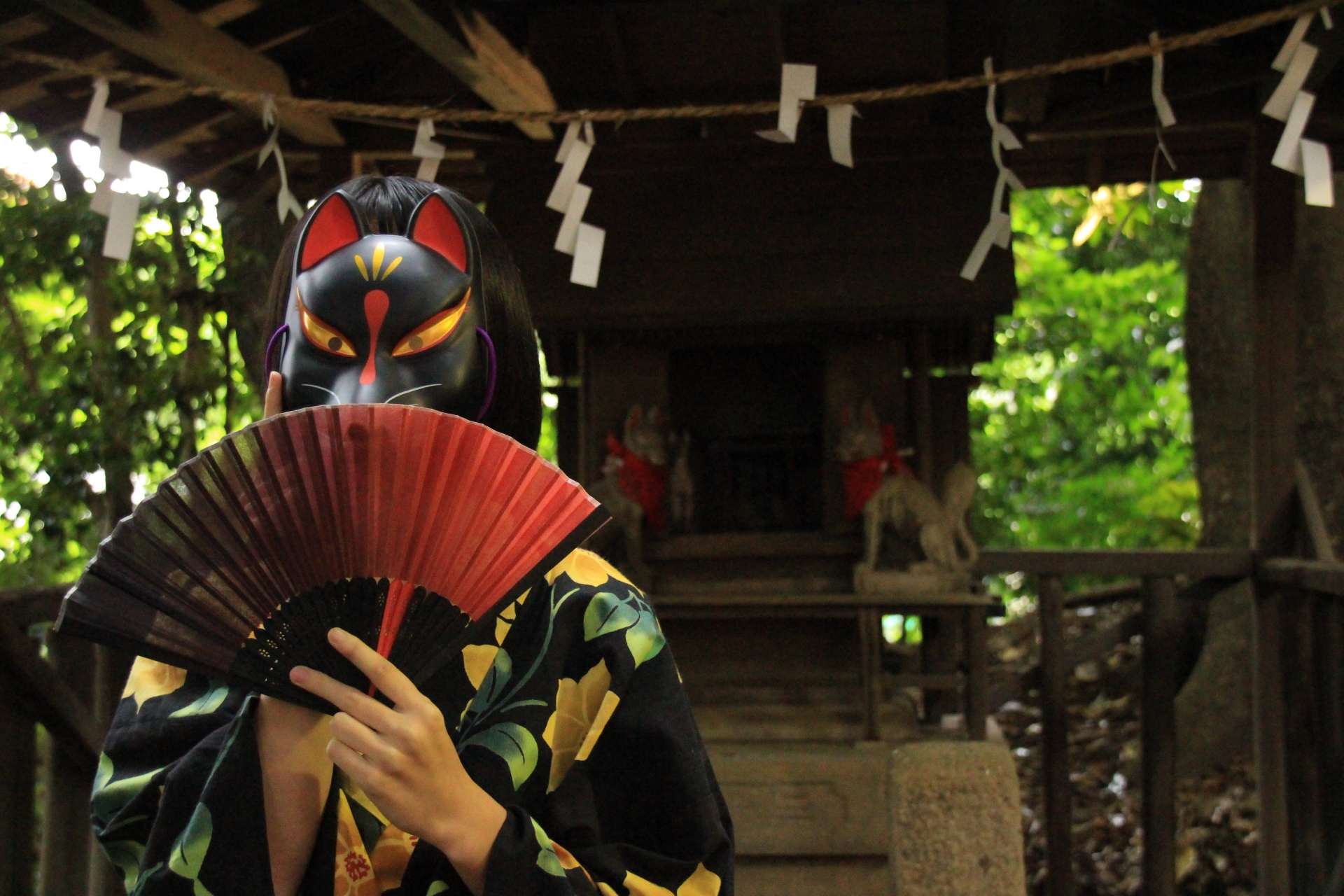
Stefanie Akkerman moved from the Netherlands to Japan in 2013 with her Japanese husband and son. She jumped into the niche of Dutch tour guiding in Tokyo and Kamakura in 2015 and occasionally writes articles about all the great sights and activities Japan has to offer. She loves (Japanese) food, and to work that all off she goes diving, snorkeling, cycling, or hiking.
This post may contain some affiliate links. When you click through and make a purchase we may receive some commission, at no extra cost to you.
One of the best ways to enjoy amazing scenery in Japan is to take one of its many scenic train rides. Sitting comfortably while watching a changing landscape passing by is a wonderful immersion in the natural beauty that Japan has to offer. Most trains on the rides below have extra large windows so you don’t have to miss a thing, and some of them even have open-air carriages. Let’s dive into the world of scenic train rides in Japan!
- Japan Rail Pass
- 1. Sagano Scenic Railway (Kyoto)
- 2. Tadami Line (Fukushima)
- 3. Hisatsu Line (Kumamoto)
- 4. Minami Aso Railway (Kyushu)
- 5. Gono Line (Akita, Aomori)
- 6. Kurobe Gorge Railway (Toyama)
- 7. Oigawa Railway (Shizuoka)
- 8. Senmo Line (Hokkaido)
- 9. Mount Fuji from the Shinkansen
- 10. Toden Arakawa Line (Tokyo)
- While in Japan, why not take a train in Kimono? Check out our recommendations!
- Japan Wonder Travel Tours
- Other articles you might enjoy
Japan Rail Pass
When travelling in Japan, international tourists can purchase a Japan Rail Pass also known as JR Pass. With the JR Pass, you can hop-on-and-off most of the public transportation lines operated by the nationwide Japan Rail Group. The multi-use tickets includes use of the local JR trains, most of the Shinkansen trains, JR operated buses and even the JR-WEST Miyajima ferry is covered. Some of the scenic train rides below are included in the JR Pass, so before getting your ticket make sure to check if the JR Pass covers the ride too.
1. Sagano Scenic Railway (Kyoto)
Are you going to be in Kyoto during the autumn? Then you can’t miss the Sagano Scenic Railway that runs between Arashiyama and Kameoka. The environment is decked out in beautiful reds and oranges during the fall foliage season between late November and early December, making Arashiyama one of the best places to see the beautiful autumn leaves. The delightful old-fashioned train rides at a leisurely pace through the mountains alongside the river, giving first-class seats to the natural spectacle in the forested ravine. One of the cars is open, and in the other cars windows can be opened to enjoy a fresh breeze of autumn air.
The ride is most popular during autumn and is closed during winter, but in the spring it reopens again to take passengers for a ride past the cherry blossoms. You can also take the ride in summer for a break of temple sightseeing amid some refreshing greenery.
Despite being operated by JR West, this railway is not covered by the JR Pass. Check Sagano Scenic Railway for pricing, schedules and how to make a reservation (recommended in autumn and sakura season).
2. Tadami Line (Fukushima)
While Fukushima prefecture is definitely off-the-beaten-path for most tourists, you will be rewarded with incredible natural beauty if you make the trek to the prefecture hundreds of km north of Tokyo. The Tadami Line, operated by JR East, connects samurai city Aizu-Wakamatsu with the Oku-Aizu countryside. Besides enjoying the scenery passing by the train window, you can visit the spots of interest along the route by hopping on and off the train.
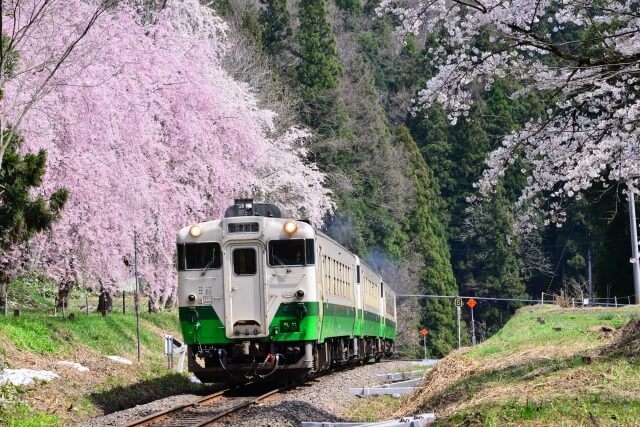
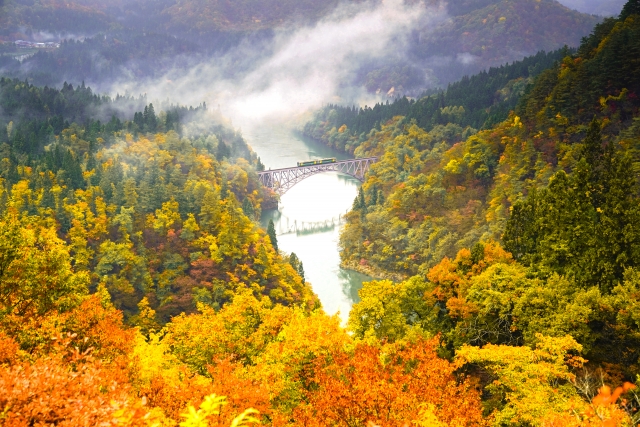
So what should you not miss when you ride the Tadami Line? In Aizu-Wakamatsu you won’t want to skip Tsurugajo Castle if you are interested in Japanese history. In Yanaizu the picturesque cliff edge-positioned Enzoji temple is worth a stop. You will also want to get off at Aizu-Nishikata station to see the best view of the Tadami Bridge. Along the Tadami River there are various bridges and viewpoints, but the iconic No. 1 Tadami River Bridge Viewpoint offers one of the best photo spots and is the easiest to reach by public transportation. Lastly, in Kaneyama there is a special carbonated onsen that allegedly can work wonders on your blood pressure and circulation issues.
The Tadami Line is covered by the JR Rail Pass.
Fukushima is the third biggest prefecture in Japan, and there is so much to explore. However the sad truth is that most people hear the word “Fukushima” and immediately think of the 2011 earthquake and disaster. The affected areas have come so far in the reconstruction process since the disaster. If you want to see the area, learn all about what happened in 2011, and even enter the Nuclear Power Plant, you should check out our 2-Day Fukushima Tour!

3. Hisatsu Line (Kumamoto)
Kyushu is a volcanically active island that is blessed with lush nature as a result of it. The third largest island of Japan has a lot of different scenery to offer and Kyushu is a must visit when travelling in Japan. On the Hisatsu Line that runs right through the inland between Yatsushiro and Hitoyoshi you can see much of that natural beauty as you rush past the green slopes dotted with small villages! You can also see a rapid river on the way where many water sports lovers go to raft.
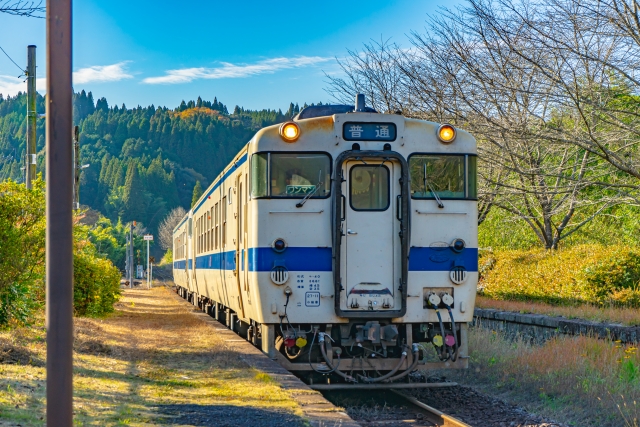
On the weekends and holidays between March and November you can also ride SL Hitoyoshi, Kyushu’s only steam driven train! The holiday sightseeing train operates only during the summer months and makes one round trip per day. Riding the SL Hitoyoshi is extremely popular and ticket must be reserved well in advance.
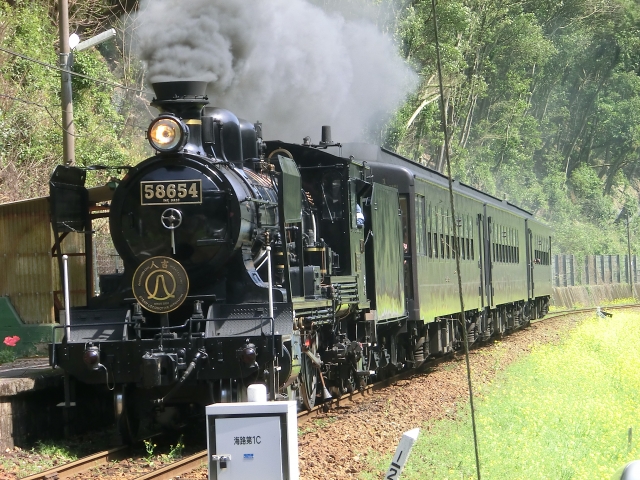
The Hisatsu Line is covered by the JR Rail Pass.
4. Minami Aso Railway (Kyushu)
Mount Aso is one of Kyushu’s most famous landmarks. The beautifully-shaped still active volcano is surrounded by large plains of waving grass and you can often see plumes of smoke coming from its crater. Minami Aso Railway operates a trolley train called ‘yuusuge’ that lets you take in the sights around Mount Aso. You can feel the wind in your hair as the cute train takes you for a round in one of Japan’s greenest areas.
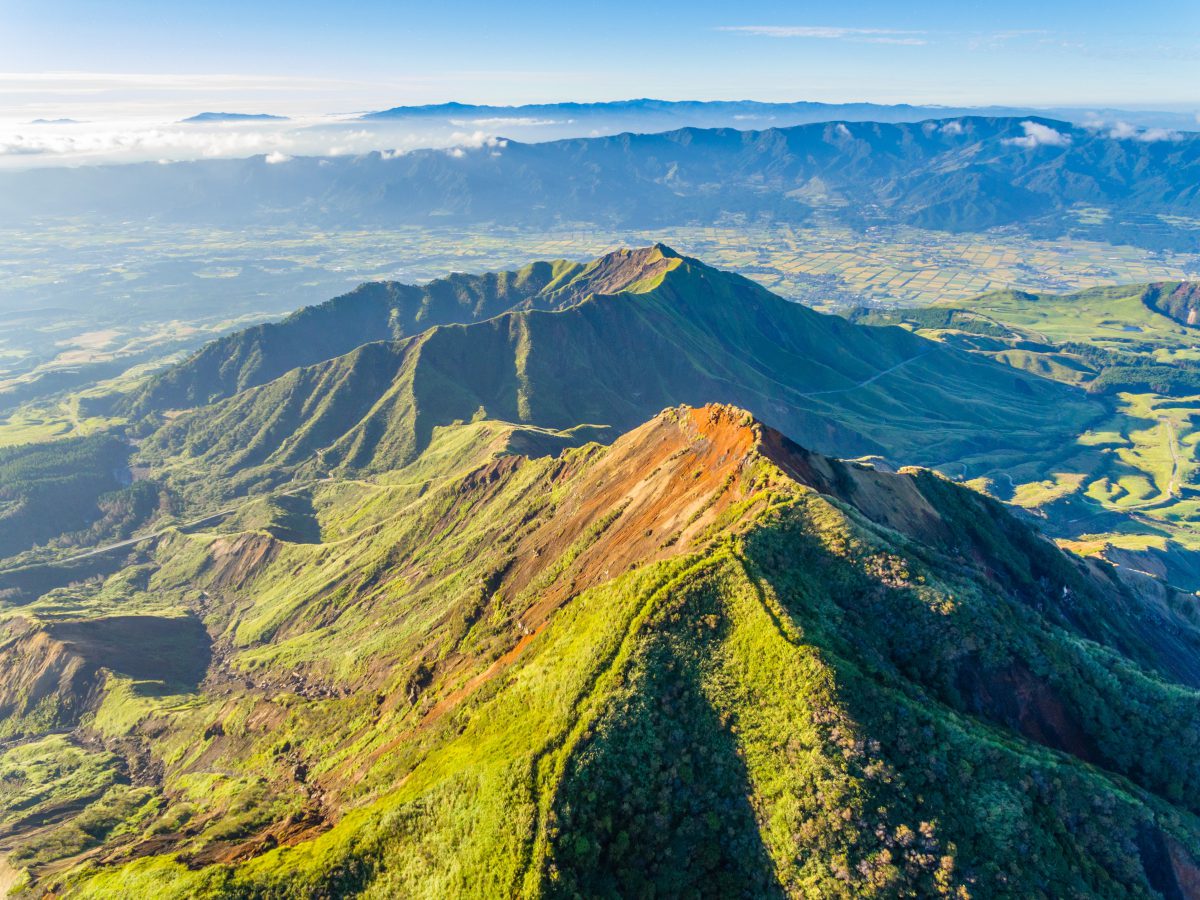
It is operated on weekends and national holidays off season, and it rides every day in the peak season. One ride lasts around 25 minutes, and it runs between Nakamatsu station and Takamori station.
Please check Minami Aso Railway for pricing and schedules
5. Gono Line (Akita, Aomori)
Located in one of Honshu’s (Japan’s main island) northernmost corners, the JR Gono line follows the coastline of Aomori and Akita. Depending on which season you ride, you can see the beautiful rugged coast either surrounded with green trees or a snowy landscape. It runs between Higashi-Noshiro and Kawabe station, and some other train station that are among the coolest train stations of Japan, you will pass through the Shirakami Sanchi World Heritage Property. You can also see characteristic rice paddies along the way and if you time it right, a fiery sunset.
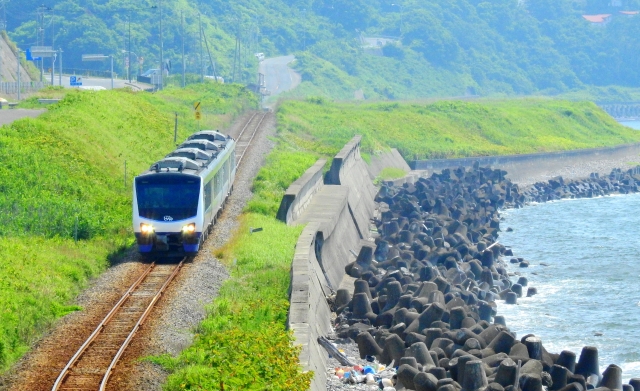
If you really want to enjoy the ride, you can use the Resort Shirakami train, which, as its name suggests, lets you savor the scenery in a more luxurious way. Live traditional music is played while you can take in the surroundings through large windows.
The JR Gono line is covered the JR Rail Pass. Check JR East for more information and schedules.
6. Kurobe Gorge Railway (Toyama)
Tucked away in the remote Toyama Prefecture, the Kurobe Gorge Railway takes you past some real hidden gems. If you like onsen hot springs, this is an especially good scenic ride to check out. A nice detail is that many of the onsen are outdoor, so you can enjoy the fresh air while you soak. The train line was originally built to aid the construction of the Kurobe Dam, but has become an attraction itself too. Each station offer offers various attractions, like observation decks, souvenir shops, hiking trails and of course onsen!
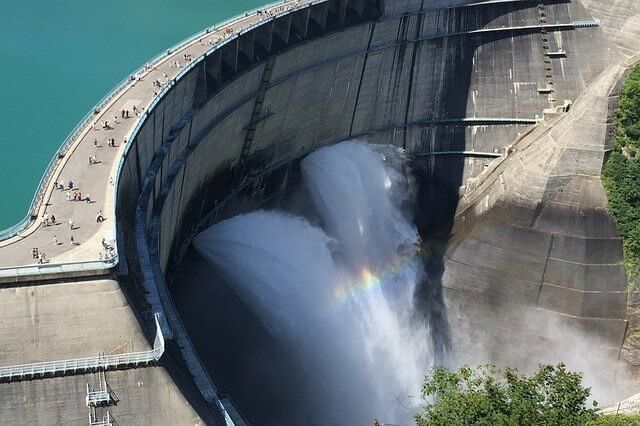

Running from Unazuki to Keyakidaira station, the train ride itself takes you through a ravine with steep cliffs covered with forests. The journey takes around 80 minutes and includes two additional stops where you can get off to enjoy the area. Only operating from mid April to November, it is the fall season which is the best. Boasting open as well as closed cars, you can choose how you want to enjoy the ride. One little insiders’ tip: sit on the right side of the train for the best views!
Please check Kurotetu for current pricing and schedules.
7. Oigawa Railway (Shizuoka)
The Oigawa Railway, also known as Daitetsu, is located in Shizuoka, a naturally-blessed prefecture that’s famous for its tea plantations and, of course, Mount Fuji. But lovers of trains will know the area for its original 1930s old-fashioned steam locomotives. They run year-round on the Oigawa Main Line between Shin-Kanaya and Senzu, and Ikawa Line from Senzu to Ikawa. On both lines you can see some spectacular sights on the way, especially Okuoikojo Station, located on a cliff in the middle of the Oi River, is worth a visit. If you come in spring, you can see the cherry blossoms as well around Ieyama station. The fall season is amazing, too.
Besides the scenic environment of Okuoikojo station, there are many points of interest along the way that you can stop by on your way back. There are open air hot spring baths, Japan’s shortest tunnel, a 220m suspension bridge you can walk and the Southern Alps Abt Railway (very steep). Kids and other Thomas the Tank Engine fans will also love Oigawa Railway, as you can actually ride Thomas and his friends!
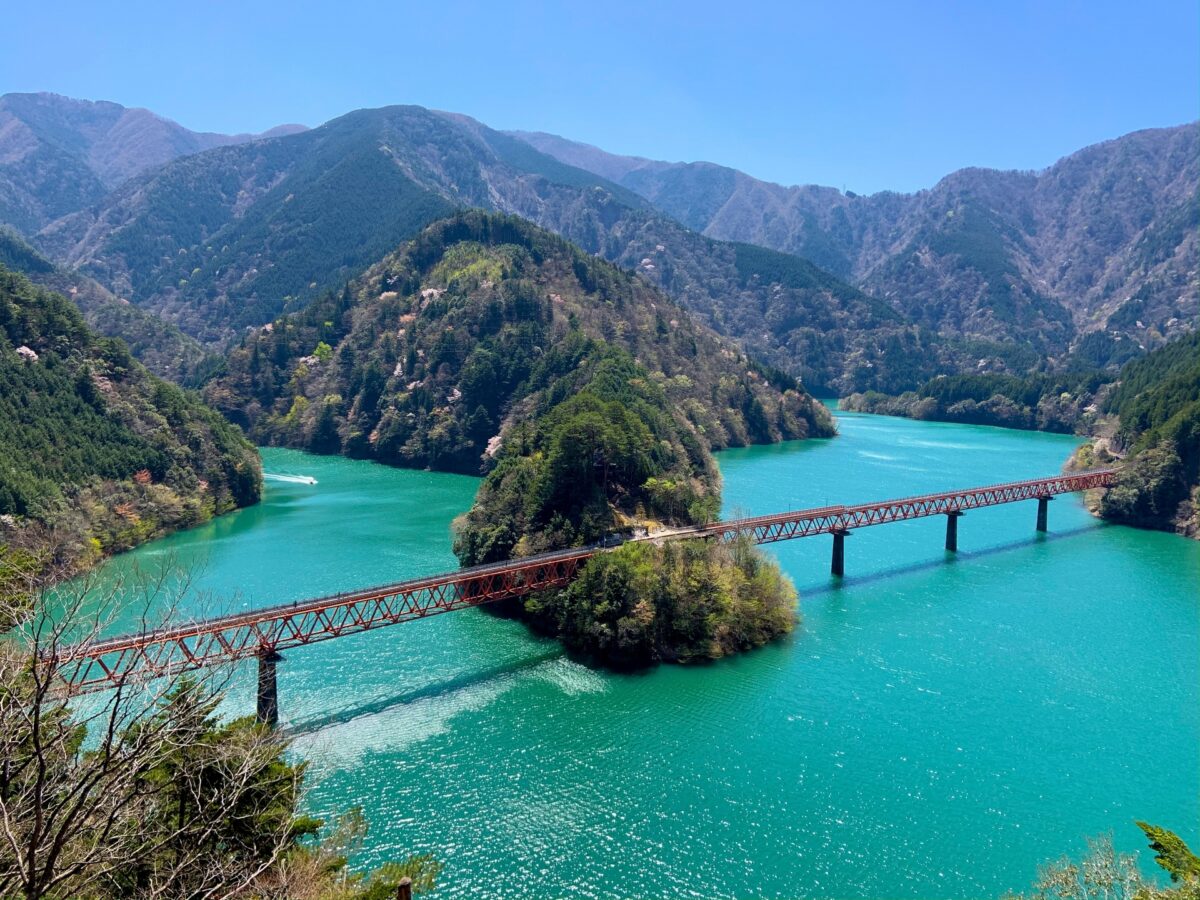
Please check Oigawa Railway for current pricing and schedules.
8. Senmo Line (Hokkaido)
Hokkaido is Japan’s northernmost island, which therefore has a temperate climate in summer and cold winters. The island boasts huge National Parks and other natural areas, and it’s a paradise for birders. The Senmo Line runs from Abashiri in the north straight through Hokkaido’s heartland to Kushiro in the south.
You will be treated to the amazing coastline of Abashiri, then go through Akan Mashu National Park with volcanic scenery and beautiful lakes, towards the Kushiro Marsh lands. In the winter, you can see a phenomenon called drift ice on Abashiri’s coast which can only be observed in very cold sea regions.
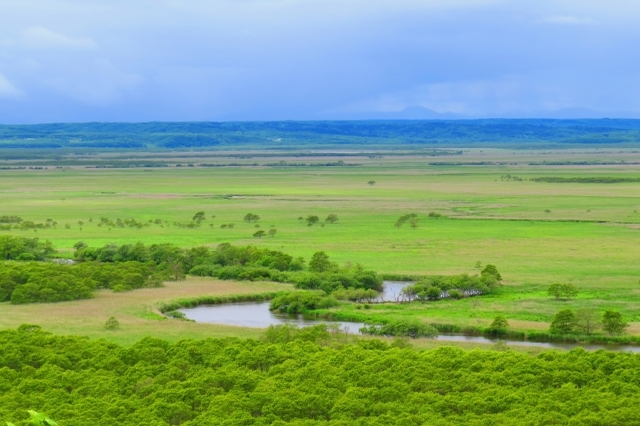
The JR Pass covers the Senmo Line.
9. Mount Fuji from the Shinkansen
Mount Fuji is one of Japan’s most famous icons, and spotting it at least once on your trip to Japan is quite essential. If you are taking the shinkansen between Tokyo and Kyoto, you’re in luck: you will pass by Mount Fuji around one hour after leaving Tokyo. If it is not too cloudy, you will usually see the majestic mountain from the window on your right (going in the direction of Kyoto) or on your left (going in the direction of Tokyo). In both cases, you’ll need to reserve seat E to see Mount Fuji from the Shinkansen.
Whether you take the fastest Nozomi (only line not covered by the JR Pass) or the slightly slower Hikari or Kodama doesn’t matter, all trains running on the Tokaido line will pass through Shizuoka and past Mount Fuji. They are nice enough to point out on the speaker system that you are passing Mount Fuji at the closest distance at that moment, so you definitely won’t miss it as the train rushes past.
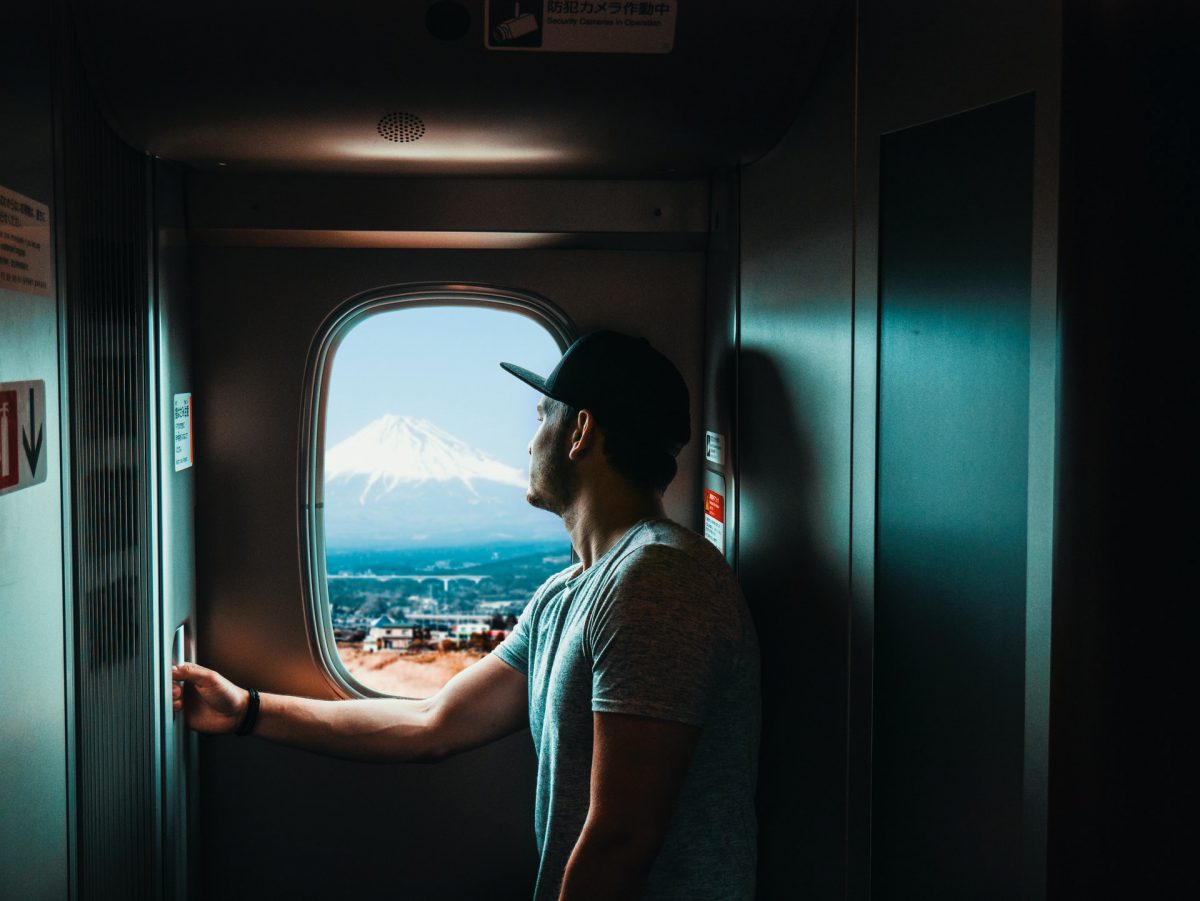
10. Toden Arakawa Line (Tokyo)
You don’t have to go far away from Tokyo to experience a scenic train ride in Japan. In fact, there is a beautiful ride that you can do in the city itself; the Toden Arakawa Line which runs between Waseda and Minowabashi in the northwestern part of the metropolis. The best part is that this train isn’t massively long like many commuter trains in Tokyo, but it is cute and very short with only two cars. You will see a whole different side of Tokyo while riding this streetcar, with narrow local alleyways and everyday life passing you by.
The nickname of this train is ‘sakura tram’, because if you ride it at the right time around late March or early April, you will have an amazing view of the blooming cherry blossoms along the route.
Pricing will depend on where you get off, but it is never more than a few hundred yen per person.


These are 10 of the most scenic train rides in Japan, but for the enthusiasts there are many more. There is so much to discover in Japan, that for many one trip to the land of the rising sun is not enough. Whether you are a first-timer or a repeater, we can help you make the most of your travel to Japan!
While in Japan, why not take a train in Kimono? Check out our recommendations!
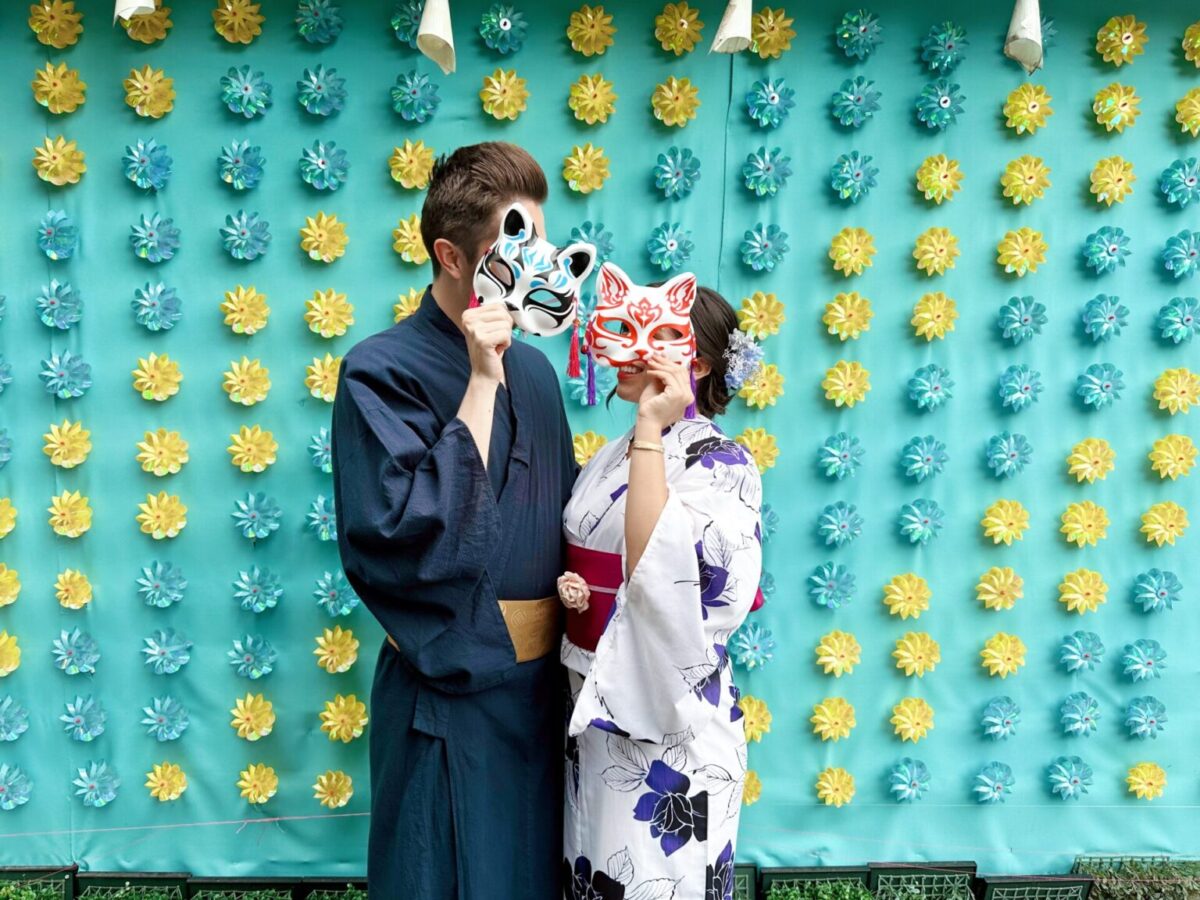
Wargo is a kimono rental brand that offers a wide range of kimono, perfect for exploring these remarkable cities in style and authenticity. Check out their stores:
Tokyo
Kyoto
Osaka
Ishikawa
Saitama
It’s easy to make lasting memories when you and the city look so photogenic! Enjoy an unforgettable date or make core memories with your family with all types of kimono for the perfect occasion!
Japan Wonder Travel Tours
Japan Wonder Travel is a travel agency that offers guided tours throughout Japan.
From private walking tours to delicious Food and Drink tours, we can help you organize the best tours just for you! If you want to explore Japan and learn more about the history and backstories of each area you are visiting, our knowledgeable and friendly English speaking guides will happily take you to the best spots!
In addition, we can provide you with any assistance you may need for your upcoming trip to Japan, so please feel free to contact us if you have any questions or need some help!
▶Tokyo Tsukiji Fish Market Food and Drink Tour
Explore the most lively and popular fish market in Tokyo and try some of the local’s favorite street foods and sake with one of our friendly and knowledgeable English speaking guides!

▶Tokyo 1–Day Highlights Private Walking Tour (8 Hours)
There’s no better way to explore an area than taking a tour with a knowledgeable local guide. You will have the chance to learn about the history and interesting background stories of Tokyo, as well as discover some hidden gems which can be hard to do without a guide.

▶Mt. Fuji Day Trip Bus Tour from Tokyo
Experience the breathtaking views of Mt. Fuji by visiting the highlights of the area on our guided sightseeing bus tour! Departing from Shinjuku in central Tokyo, you can travel comfortably to all of the best spots in the area by bus.

▶Kyoto Private Full Day Walking Tour
On this full-day private tour of Kyoto, you will be able to see the highlights of Kyoto in just one day and at the same time develop a deeper understanding of both the culture of the area and Japan as a whole.

Follow us on Instagram, Facebook, Twitter, and TikTok for more travel inspiration. Or tag us to get featured!
Happy traveling!
Stay informed of the best travel tips to Japan, the most exciting things to do and see, and the top experiences to have with the Japan Wonder Travel Newsletter. Every week we will introduce you to our latest content.
